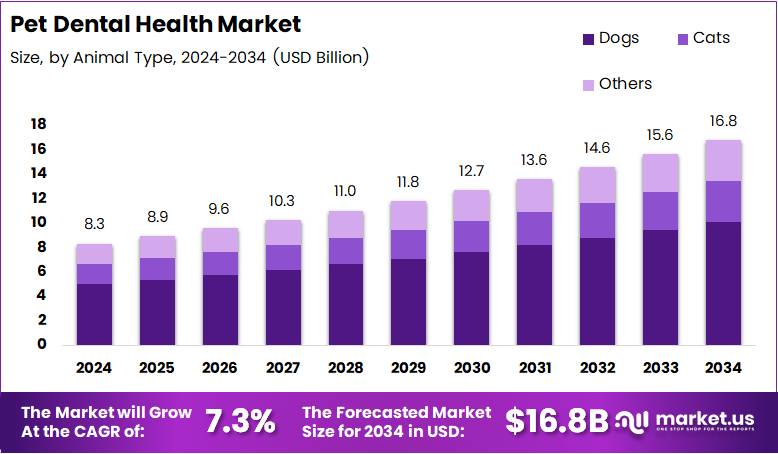Understanding the Cost of Pet Insurance
Affiliate links for the products on this page are from partners that compensate us (see our advertiser disclosure with our list of partners for more details). However, our opinions are our own. See how we rate insurance products to write unbiased product reviews.
- The average monthly cost of accident and illness pet insurance is $53 for a dog and $32 for a cat.
- Accident-only pet insurance policies are cheaper than policies covering both accidents and illness.
- Pet insurance doesn’t cover pre-existing conditions, but some may cover “curable” conditions.
Most pet owners know just how expensive a trip to the vet can be. If you’re considering getting pet insurance, your monthly cost of pet insurance can vary widely.
A few factors can change how much your pet insurance will cost, including the type of pet you have. In general, insurance for dogs is more expensive than insurance for cats. And, for dog owners, the cost can vary widely by breed. However, if your cat or dog is injured, pet insurance could provide helpful financial assistance until they’re back on their paws.
Average cost of pet insurance
The North American Pet Health Insurance Association (NAPHIA) gathers data on pet insurance from companies across the US. As its data demonstrates, the type of coverage you buy and the type of pet you have will impact how much you’ll pay.
For dogs
The table below illustrates the average pet insurance premiums for dogs:
Source: 2022 data from the NAPHIA
For cats
Take a look at the average monthly rates for cat insurance:
Source: 2022 data from the NAPHIA
By company
Like any other type of insurance, pet insurance companies weigh factors about your pet differently. In turn, companies will price your pet’s coverage differently. Even for very similar policies, prices vary.
Here’s how each company’s prices stack up for a hypothetical pet, according to data from Insurify.
By breed
According to quotes from Pawlicy Advisor, here’s how insurance rates for several of the most popular dog breeds compare. These quotes are for a five-and-a-half year-old dog
According to Pawlicy Advisor, these are the average monthly pet insurance premiums for different for cat breeds:
Factors influencing pet insurance pricing
Pet insurance costs vary based on factors like the type of pet, its breed, age, location, coverage type, deductible, and reimbursement rates.
Pet’s age and breed
Dogs come in all shapes and sizes, and the cost of insuring a dog can vary widely based on its breed.
Short-nosed dogs, like bulldogs or pugs, can be costly since breathing problems amongst the breed are more common. Large dogs can also be more expensive to insure because they require more medication, costing more for the insurance provider. Large dogs are also more prone to joint issues than small dogs, NAPHIA says.
Mixed breeds are the least expensive to insure. According to the NAPHIA, purebred dogs and cats are more likely to have inherited medical conditions than mixed breed pets. Some breeds have more inherited health conditions than others.
Another factor that influences your pet insurance cost is your pet’s age. Insurance gets more expensive as your pet gets older. Purchasing a pet insurance policy while your cat or dog is young could help keep costs down. Some pet insurers may even lock in your insurance premium as your pet ages.
It’s worth noting that not all pet insurance companies lock in rates. For example, ASPCA’s pet insurance increases with the pet’s age. Check your policy to determine if your rates will increase in the future.
Location
The cost of your policy may be higher if vet care is more expensive in your area. For example, according to Pawlicy Advisor, in New York, the average monthly insurance cost for cats is $30.30 and $61.05 for dogs. While in Wyoming, the average monthly cost for cats is $19.35 and $33.97 for dogs.
Type of coverage
Accident-only pet insurance policies are cheaper than accident and illness. However, coverage exclusively for accident-related conditions is much harder to find.
While pet insurance company, Embrace, offers this coverage for older pets, no quotes are available online. Both Pets Best and AKC offer accident-only pet insurance and charge transaction fees, which will increase the actual cost. Pets Best charges $2 per payment, while AKC adds a $3 service fee to each month’s premium. Both companies charge this fee on accident-only and accident and injury plans.
Be aware that accident-only policies offer limited coverage and don’t cover illnesses. A comprehensive policy, while more expensive, offers more adequate financial safeguards against unexpected expenses.
Deductible and reimbursement levels
Deductibles and reimbursement rates are components of an insurance policy that influence your cost and coverage amount.
A deductible is the amount you pay out-of-pocket before your insurer provides coverage. Depending on the insurance provider, you’ll be responsible for an annual deductible or a per-incident deductible.
Reimbursement rates are how much of the claim amount your insurer is responsible for. For example, an 80% reimbursement rate means your insurer will reimburse 80% of the bill after covered service (after you’ve met your deductible).
Most pet insurance policies are based on a reimbursement model, meaning you’ll foot the bill first and get reimbursed later. So, you’ll want to make sure you have some way to pay unexpected veterinary bills up front, as there may be some time between submitting your claim and receiving reimbursement.
How to reduce pet insurance costs
You can’t change your pet’s age or breed to save on pet insurance. However, there are still cost-saving strategies for pet insurance that could lower bill.
Choosing a higher deductible
Raising your deductible generally lowers your premiums. However, make sure you have the cash available to cover that amount.
Lower your reimbursement rate and annual limit
Insurance companies may offer various levels of coverage, reimbursing expenses at rates typically ranging from 70% to 90% of the cost, with an annual maximum coverage limit. Some policies limit coverage to $5,000 per year, while others provide unlimited coverage. Opting for a lower reimbursement rate and annual limit lowers the cost of your pet insurance policy.
Taking advantage of discounts
Like many other insurance policies, you can generally pay for your pet’s insurance coverage by the month or pay for the year’s coverage upfront. Paying the year in full could result in a discount, saving you a couple dollars. Doing this could also help save on service fees. Pets Best, for example, charges a service fee of $2 per transaction, which could add up if you pay monthly. Some insurers also offer discounts when you include multiple pets on a plan.
Purchase preventive care
If you decide to choose a cheaper, less comprehensive, accident-only policy, you may decide to pair it with preventive care.
Taking preventive measures and catching potential issues while your pet is young can save you thousands of dollars in curative treatments and procedures as your pet ages. Consider adding a pet wellness plan to your policy. These plans cover the cost of routine expenses, such as wellness exams, vaccinations, and spaying or neutering your pet.
Pet wellness plans are usually available as add-ons to your pet insurance policy. However, pet companies, such as Wagmo, Banfield Pet Hospital, Petco, and other private vet practices, offer stand-alone policies.
Comparing pet insurance plans
Comparing quotes is one of the most effective cost-saving strategies for pet insurance. You can either compare quotes manually or by using an online comparison tool.
Importance of comparing multiple quotes
Like with any other type of insurance, comparing pet insurance quotes is the best way to save. Each insurance company will consider your pet differently, so it’s essential to check with several to find the best price.
Most pet insurance companies offer a simple online quote system, so it’s easy to calculate what your pet’s insurance could cost. Gather three to five quotes, and compare them. Look for the reimbursement amount and the maximum annual limit, and then scan the fine print to see if you’ll ever be surprised with rate changes as your pet ages. Look for a policy with the most versatile coverage for your pet’s needs.
Using online comparison tools
Comparing quotes from dozens of pet insurance companies can be time-consuming and tedious. That’s why online quote comparison tools exist. These platforms generate multiple quotes for you at once so you can compare them side by side.
Be aware that different pet insurance brokers will showcase different pet insurance options, typically favoring companies in their network. Additionally, the quotes provided may not be entirely accurate, and you may need to reconfirm them with the actual insurance company.
FAQs
Factors affecting pet insurance pricing include your pet’s species, breed, age, and the area you live in. Components of your policy, including coverage types and amounts, deductible, and reimbursement levels also influence your premiums.
The average monthly cost of pet insurance for dog owners is about $17 for an accident-only policy and $53 for an accident and illness policy. The average monthly cost for cat owners is about $10 for an accident-only policy and $32 for an accident and illness policy. These figures can vary widely based on various factors.
You can reduce the cost of your pet insurance by adjusting your coverage, like choosing a higher deductible or lower reimbursement rate. Another way to lower your cost is by seeking discounts, such as those for multiple pets, or for paying annually instead of monthly.
The choice between an accident-only and accident and illness policy depends on your pet’s needs and your financial situation. Comprehensive coverage is more expensive but covers a broader range of health issues. Accident-only is more affordable, but it only covers injuries from accidents.
Compare quotes by obtaining prices from several insurers for the same level of coverage, deductibles, and reimbursement rates. You can also utilize online comparison tools to compare prices from multiple insurance companies at once.
link







